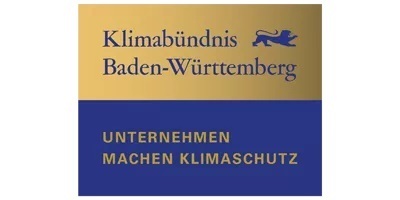Sustainability at Kärcher
The concept of sustainability is deeply embedded in the family business of Kärcher. We accept responsibility for the environment, our products, the supply chain, the company, society and our staff. Because we believe that this is how we can make a difference – for the society in which we live. Be the difference!
We take responsibility
Sustainable, people-oriented company development is the central focus of our activities. We want to promote values – for our customers, our employees and the company. The reason behind this is our clear commitment to our social responsibility to be a good corporate citizen. And we take this responsibility extremely seriously in all areas of the company. On the one hand, with the continued existence of our company through successful products and an honest and reliable partnership with our customers, employees and suppliers. On the other, by creating attractive working conditions, reducing the ecological footprint of our business activities and making efficient use of resources.
Based on the brand claim, we have coined the motto "Be the difference" for our sustainability communication. This is because we want to make the difference – and be the benchmark in our industry. To achieve that, we have defined clear targets: Since 2021 our global production is CO₂-neutral on balance sheet. Until 2025 we will reduce our complete CO₂ footprint by 21 percent, followed by another 21 percent until 2030. In our products and product packaging, we are increasingly focusing on reducing plastic and utilising sustainable raw materials. We are making sustainability an integral part of the entire supply chain.

Fields of action in our sustainability strategy
Cultural sponsorship
"With its sustainability strategy 2025, Kärcher has set itself the target of concentrating its social commitment on the theme of value retention. One area where this has already proven successful for many years is cultural sponsorship. This involves working to preserve historical monuments and buildings free of charge.
Since 1980, we have cleaned over 150 monuments around the world as part of our restoration work. As well as the colonnades on St. Peter's Square in Rome, the statue of Christ the Redeemer in Rio de Janeiro, the over 3300-year-old Colossi of Memnon in Luxor, Upper Egypt, and the sculptures of presidents' heads on Mount Rushmore, this list also includes Aachen cathedral and the Kaiser Wilhelm Memorial Church in Berlin.
The removal of organic growth and black crusts helps to ensure that the monuments will continue to last for generations to come, as well as enabling restorers to identify and rectify damage more easily. The projects have a lead time of around two years and are always planned and executed in close collaboration with the owners, monument conservationists, restorers and art historians."
Facts and figures
Where there are targets, successes must be measurable. That also applies to sustainability, as it is not enough for a company only to make a promise. We must keep track of the targets set within the strategy and continually monitor our sustainability performance.
Since 2014, we have been recording the implementation of our sustainability targets consistently, uniformly and completely digitally at all production and logistics sites worldwide. This is how we evaluate CO₂ emissions, water and energy consumption, for instance, and analyse the developments in the area of packaging materials.
We also monitor the requirements of environmental legislation and standards, such as the ISO 14001 standard, in a standardised and fully digital manner. Overall, we consequently adhere to over 10,000 regulations and obligations.
When reporting on our key figures, we follow the guidelines of the Global Reporting Initiative (GRI).

Awards
Sustainable. From the outset.
Taking on responsibility – that was an essential part of the corporate culture at Kärcher from the beginning. Alfred Kärcher and his wife were guided by the insight that sustained economic success is only possible by taking social issues into consideration.
In 1939, when the incipient company relocated to Winnenden, Alfred Kärcher built his own waste water treatment plant on company premises. In 1940, he founded the Alfred Kärcher foundation for employees in need, which produced toys to give employees' children as Christmas presents from 1943 to 1948.
This was followed by many other milestones. These included the first large-scale cleaning project of the statue of Christ in Rio de Janeiro, the commissioning of the company's own photovoltaic systems on the company premises, the publication of the Kärcher Code of Conduct, research projects for energy-efficient production, the introduction of a global energy management system and the first product parts made of recycled plastic in series production.











































